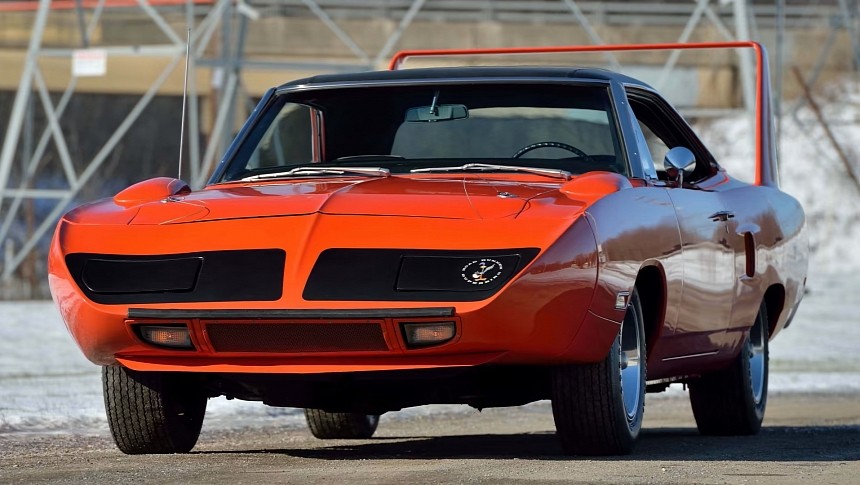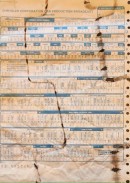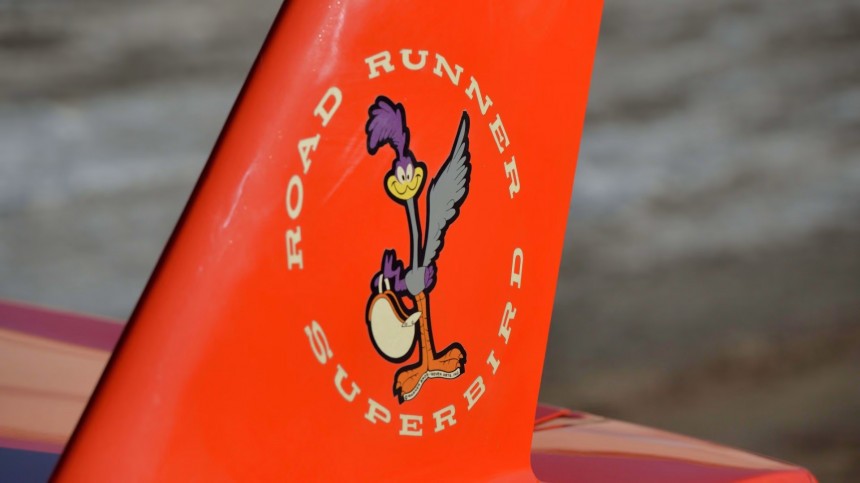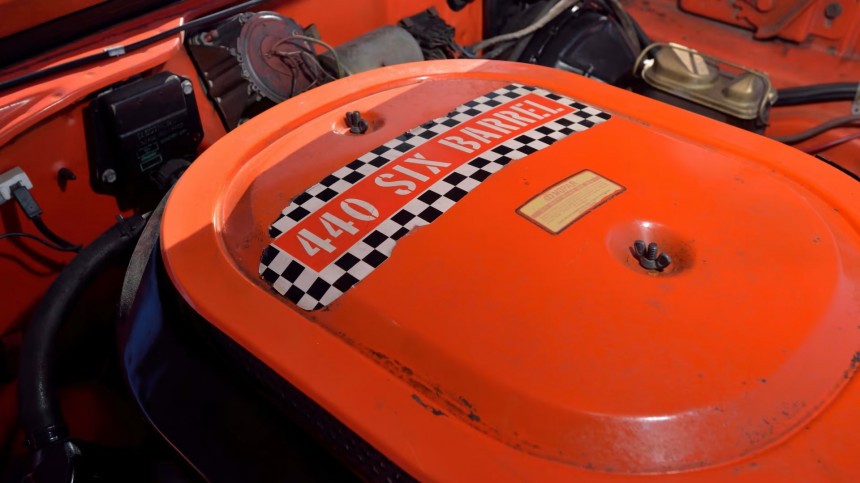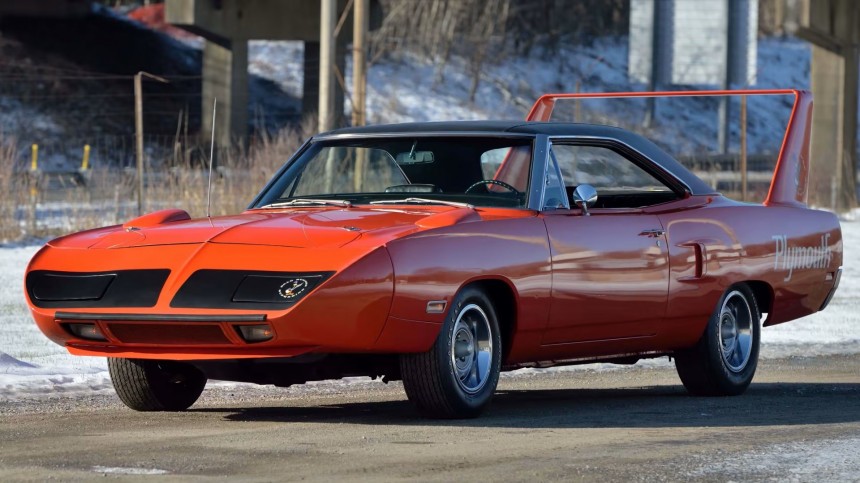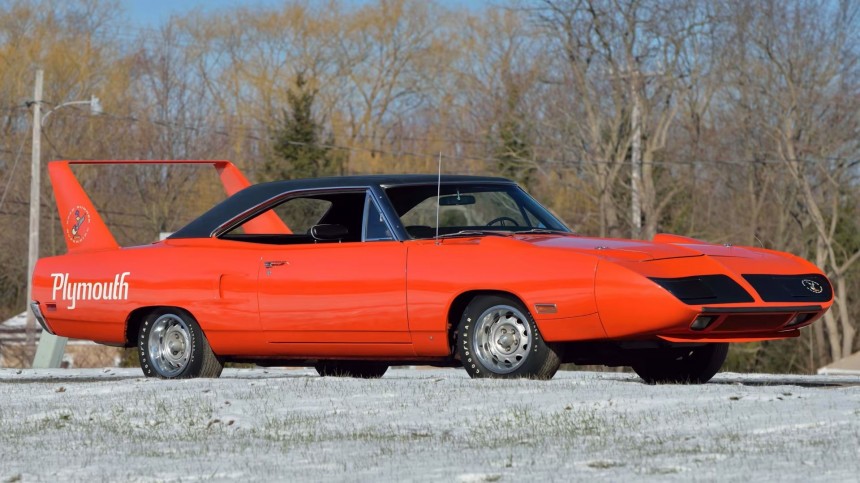In the history of American motorsports, the name Richard Petty sits very high on the list of all-time greats. The multiple-NASCAR record holder is closely tied to the Chrysler Corporation, whose fabulous machines were driven to victory by the equally-legendary King. His influence over Mopar's performance division eventually led to the creation of a fantastic automobile – the Superbird.
A long-time Plymouth loyalist, Petty asked for the sleek and bullet-looking Dodge Charger Daytona to race during the 1969 season. However, Chrysler bureaucrats wanted to cash in on the Petty-Plymouth association and denied his request.
But the racing driver called Mopar's bluff and switched to Ford. Chrysler's white collars realized they shot themselves in the leg and offered Petty retribution. Since the winged Dodge was too delicate of a subject, the corporation made a compromise: make a Charger Daytona lookalike under Plymouth's badge.
It worked: Petty returned under the Mopar banner; the rest is history. The car that sealed the deal was the Road Runner Superbird. Chrysler even bought the rights to use the famous cartoon character from Disney.
The model was - just like its Dodge Daytona predecessor – built for one year only, in 1970. On top of that, a limited production run was approved to meet NASCAR homologation requirements. The motorsport governing body mandated that 500 units be built for a car to be race worthy.
Plymouth assembled nearly 2,000 units to align with a newly introduced NASCAR requirement that imposed a 2:1 dealerships-to-cars ratio. Consequently, 1,935 rear-winged Road Runners were put together. This is the most often circulated figure, although some sources indicate different production values.
Three engine choices were available, both iconic Mopar big-blocks: the 440 CID (7.2-liter Super Commando) and the 426 HEMI. The most popular choice was the bigger displacement, again segmented into the entry-level four-barrel or the high-performance six-pack.
For some strange reason, Plymouth deemed it reasonable to serve "race performance" and "automatic transmission" on the same Superbird platter. Most of these Road Runners came with the lazy-driver TorqueFlite three-speed self-shifting gearbox.
Four hundred-eight of the six-pack Superbirds came with the three-on-the-tree, and one has some history. Crouch Motors from Richmond, Kentucky, received the car, and the dealership president decided to keep it close to its chest.
So close that it trusted his 16-year-old son with the track-thrashing automobile. Unlike most gearheads – especially teenagers – the youngster controlled his right foot and took great care of his Plymouth. He drove it with a composed behavior and pampered it in all imaginable ways.
Years went by, and the car was retired into storage. Little is known from the period, except that the vehicle never suffered from elements or improper ownership. It retained all its original features and did so to this day.
In the late 80s, the original owner – now an even more responsible gearhead – recommissioned the Superbird; this time, the duo went to car shows, gatherings, and beauty contests. The stance and demeanor of the Road Runner must have made an impression, as it received awards for its condition, status, and other merits.
A second retirement ensued until 2007. At the Palm Beach auction of that year, the car changed hands for $324,500. At that time, the odometer registered 21,911 miles (35,255 kilometers). Fast-forward another sixteen years, and the Tor Red Superbird is again the object of a public offering.
The 124 miles (200 kilometers) added to the clock during this prolonged period indicate that the car's considerate owner is fully aware of what this machine represents. It's a time capsule in its own right, retaining the factory-installed engine, transmission, rear end, fuel tank, carburetor triad, intake manifolds – the lot.
The NASCAR Production Codes on the Broadcast sheet – see it in the gallery – testify to its authenticity (along with other documents that accompany the sale). The expected price ranges in the $380,000 zone.
While almost identical to the previous model-year Dodge Charger Daytona, the 1970 Plymouth Road Runner Superbird has a more pronounced back-swept "towel-rack" spoiler. Why Mopar engineers changed the wind tunnel-determined angle of the rear wing is still a puzzle. But the aerodynamic element serves piston addicts as a solid visual cue to the car's correct identity (when seen from a distance).
This particular bird rocks its matching numbers 390-hp / 490-lb-ft (395 PS/664 Nm) 440-cube three-twin-barrel V8 engine. The heavy-duty A727 automatic transmission and the A36 Performance Axle Package with the 8.75-inch 3.55:1 differential are still in place. The package also includes power steering, power brakes, and a better cooling system. The sale is part of the 3,000-car Indy 2023 auction held between May 12-20 at the Indiana State Fairgrounds in Indianapolis.
But the racing driver called Mopar's bluff and switched to Ford. Chrysler's white collars realized they shot themselves in the leg and offered Petty retribution. Since the winged Dodge was too delicate of a subject, the corporation made a compromise: make a Charger Daytona lookalike under Plymouth's badge.
It worked: Petty returned under the Mopar banner; the rest is history. The car that sealed the deal was the Road Runner Superbird. Chrysler even bought the rights to use the famous cartoon character from Disney.
Plymouth assembled nearly 2,000 units to align with a newly introduced NASCAR requirement that imposed a 2:1 dealerships-to-cars ratio. Consequently, 1,935 rear-winged Road Runners were put together. This is the most often circulated figure, although some sources indicate different production values.
Three engine choices were available, both iconic Mopar big-blocks: the 440 CID (7.2-liter Super Commando) and the 426 HEMI. The most popular choice was the bigger displacement, again segmented into the entry-level four-barrel or the high-performance six-pack.
Four hundred-eight of the six-pack Superbirds came with the three-on-the-tree, and one has some history. Crouch Motors from Richmond, Kentucky, received the car, and the dealership president decided to keep it close to its chest.
So close that it trusted his 16-year-old son with the track-thrashing automobile. Unlike most gearheads – especially teenagers – the youngster controlled his right foot and took great care of his Plymouth. He drove it with a composed behavior and pampered it in all imaginable ways.
In the late 80s, the original owner – now an even more responsible gearhead – recommissioned the Superbird; this time, the duo went to car shows, gatherings, and beauty contests. The stance and demeanor of the Road Runner must have made an impression, as it received awards for its condition, status, and other merits.
A second retirement ensued until 2007. At the Palm Beach auction of that year, the car changed hands for $324,500. At that time, the odometer registered 21,911 miles (35,255 kilometers). Fast-forward another sixteen years, and the Tor Red Superbird is again the object of a public offering.
The NASCAR Production Codes on the Broadcast sheet – see it in the gallery – testify to its authenticity (along with other documents that accompany the sale). The expected price ranges in the $380,000 zone.
While almost identical to the previous model-year Dodge Charger Daytona, the 1970 Plymouth Road Runner Superbird has a more pronounced back-swept "towel-rack" spoiler. Why Mopar engineers changed the wind tunnel-determined angle of the rear wing is still a puzzle. But the aerodynamic element serves piston addicts as a solid visual cue to the car's correct identity (when seen from a distance).
This particular bird rocks its matching numbers 390-hp / 490-lb-ft (395 PS/664 Nm) 440-cube three-twin-barrel V8 engine. The heavy-duty A727 automatic transmission and the A36 Performance Axle Package with the 8.75-inch 3.55:1 differential are still in place. The package also includes power steering, power brakes, and a better cooling system. The sale is part of the 3,000-car Indy 2023 auction held between May 12-20 at the Indiana State Fairgrounds in Indianapolis.
